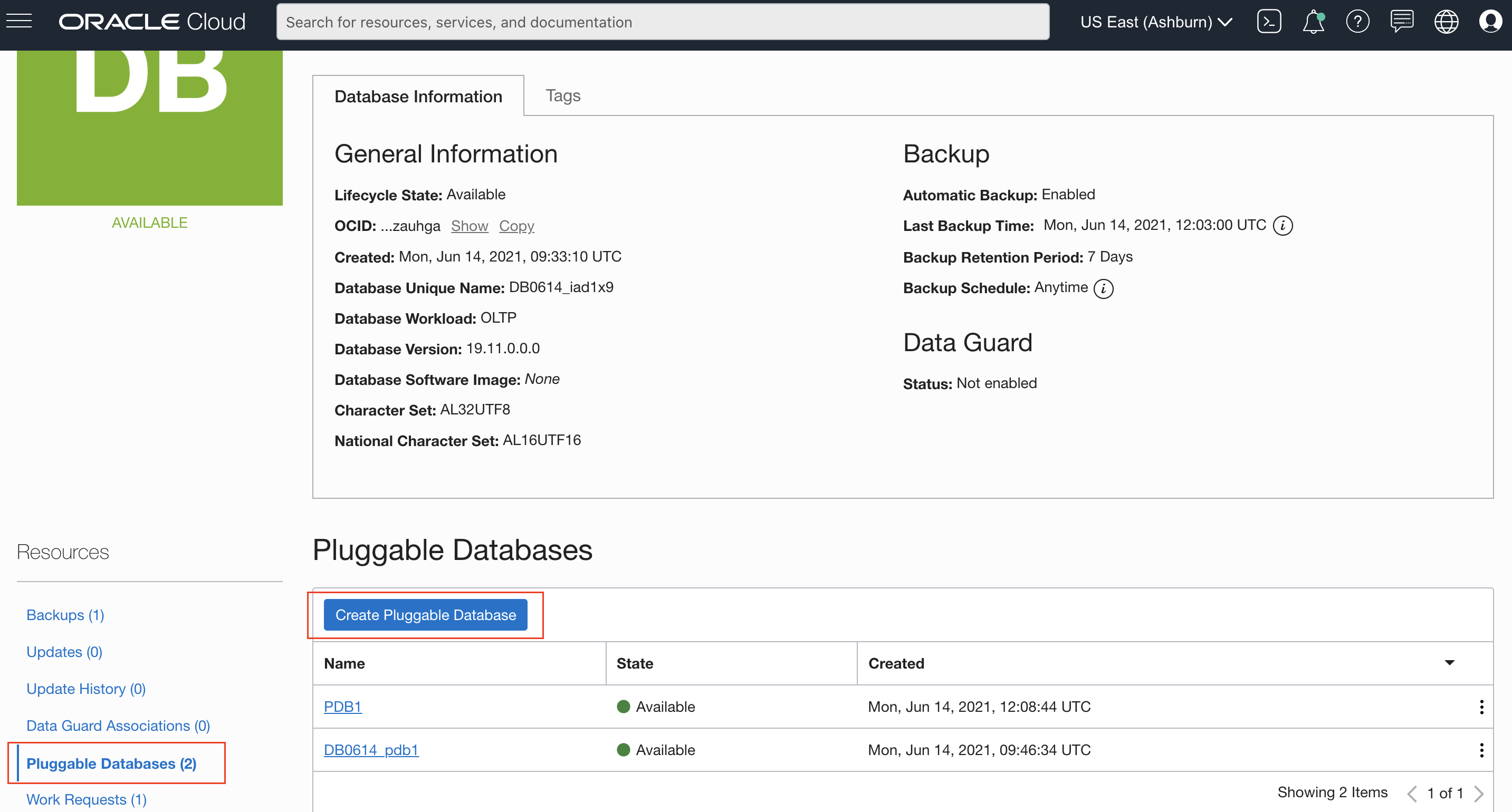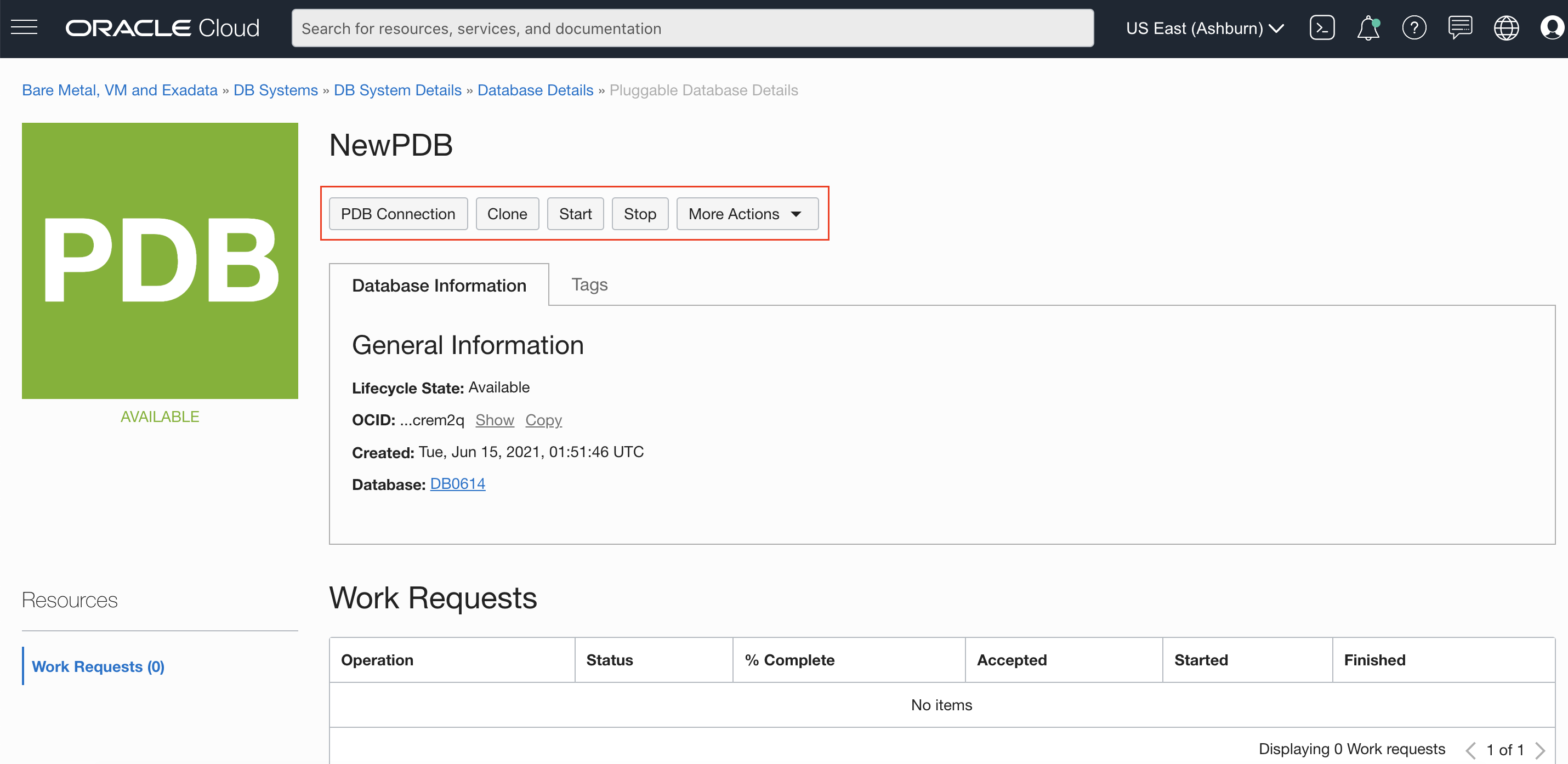We are pleased to announce the General Availability (GA) of PDB Management on Database Cloud Service (DBCS) for VM and BM databases. Gone are the days when a new database was provisioned with a single PDB with lifecycle operations based on that CDB and PDB management had to be performed manually via SQL commands. With this new feature, users can create and manage pluggable databases (PDBs) via OCI console and APIs. This functionality provides complete user control for creating, managing, and performing lifecycle operations on PDBs.
The new PDB Management provides:
- Create and delete PDBs within the existing container database
- Start and stop PDBs
- Clone a PDB into the existing CDB, or to a remote CDB
- Connection string to each PDB
- Support backup, restore, and Data Guard operations for CDB with PDBs
Pluggable Databases are managed as an OCI resource in the context of DB System and Database, and all the lifecycle operation can be performed on them just like any other OCI resources. To create PDBs, specify the PDB name and database specific security credentials. Users can fully manage the lifecycle of these PDBs, which are compartment aware and belong to specific CDBs in which they are created.
OCI Console Experience
We will go over the following core user journey highlights for PDB management using OCI console:
- Create a pluggable database (PDB)
- How to perform lifecycle operations on PDBs
- How to clone a pluggable database
Create a pluggable database (PDB)
From the Bare Metal, VM, and Exadata service home page, navigate to DB System → Database → Pluggable Databases, and click on ‘Create Pluggable Database’. To create a PDB, provide PDB name, PDB password, etc. The PDB is a resource of the database.

Perform lifecycle operations on PDBs
PDB lifecycle operations of starting, stoping, tagging, and deleting can be performed directly from the OCI Console. The PDB Connection tab provides connection strings to use when connecting to that PDB.

How to clone of a PDB
You can clone a PDB into the same CDB. Go to PDB details page, and click on ‘Clone’. Provide new PDB details on the screen.

Few additional points to note while creating and managing PDBs:
- There is no change in the billing with the introduction of this feature.
- Remote cloning of PDB is currently not available on OCI Console. Currently, it is only available via API, SDK, and Terraform.
- Backup, Restore, and Data Guard operation performed on the database will take consideration of the underlying PDBs as well. For example, when you take a backup of the database, and restore at a later point in time, your PDBs will be part of your restored database.
- For this initial release, existing PDBs (not plugged in) in a database will be replicated to standby at the time of Data Guard configuration. Post Data Guard configuration, you cannot create the PDBs via console/API, however you can create additional PDBs via sqlplus and they will be visible in OCI console.
- Other PDB lifecycle operations such as refresh, hot clone, etc via OCI console and APIs are being worked on as a roadmap item.
Availability
Support for pluggable database (PDB) is now available for Database Cloud Service (DBCS) in all OCI commercial regions.
